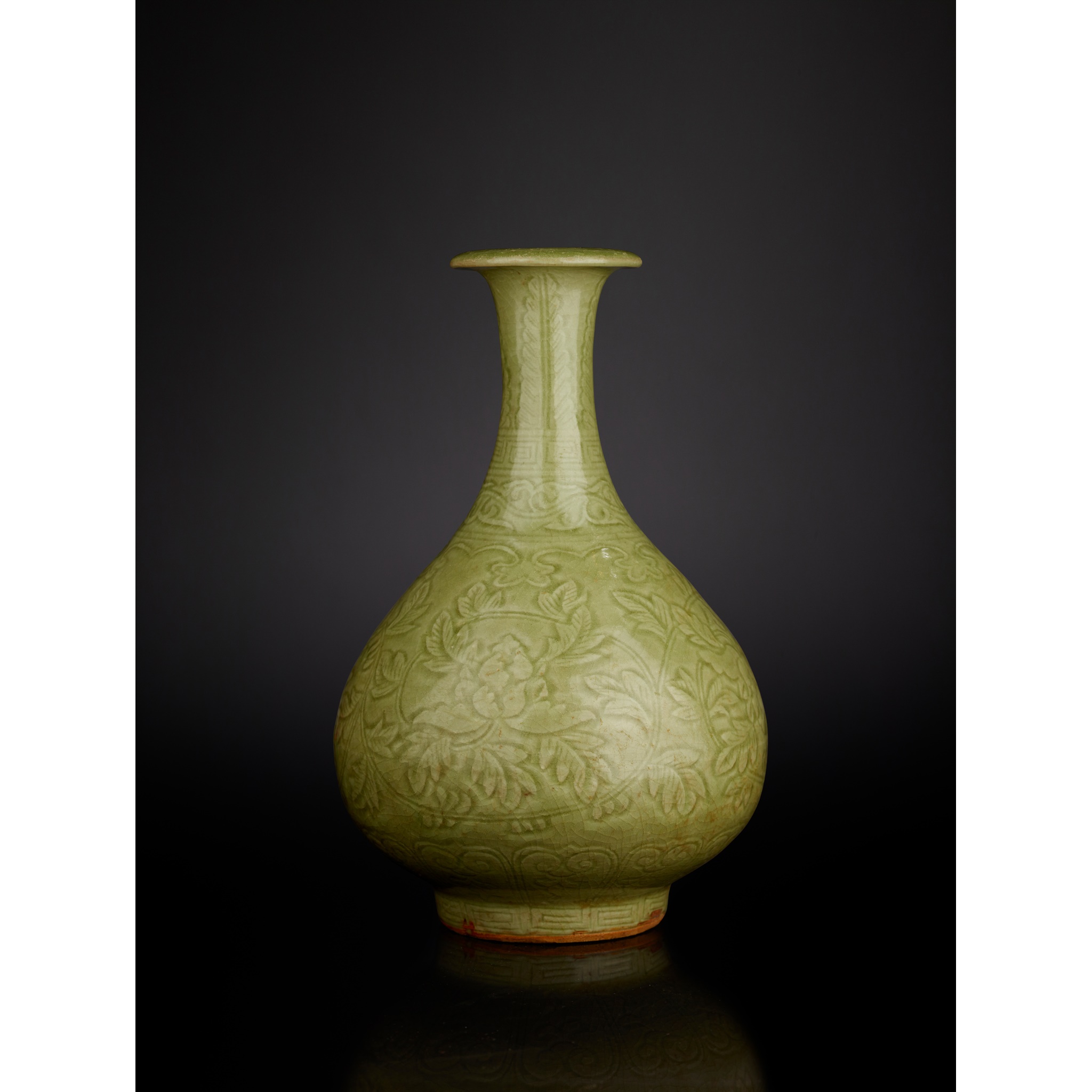
LONGQUAN CELADON YUHUCHUN VASE
EARLY MING DYNASTY
£35,000
Fine Asian & Islamic Works of Art | 682
Auction: 13 May 2022 at 11:00 BST
Description
明早期 龍泉窯青釉劃花花卉紋玉壺春瓶
the elegantly proportioned pear-shaped body rising from a slightly splayed foot, sweeping up to a tall waisted neck and an everted lipped rim, the body boldly carved with large flowers borne on an undulating stem also issuing furled leaves, above a broad lotus lappet band enclosing ruyi heads, with a key-fret border at the foot, the shoulder encircled by a pendent ruyi-head border, with classic scroll, key-fret and upright lappet bands at the neck, applied overall with an even olive-green glaze save for the foot ring
Dimensions
Provenance
Provenance: Private Canadian collection; formerly in a private Hongkongese collection, the late collector acquired it from Hong Kong before migrating to Canada
Footnote
Note: five comparable Longquan celadon-glazed yuhuchun bottle vases incised with flower motifs and dated to the Ming dynasty are in the collection of the National Palace Museum, Taipei, museum number: 故瓷9976, 11899, 14574 and 中瓷1404, 3978; another Ming dynasty example of similar shape and colour of the glaze is in the Summer Palace collection. A further comparable example dated to Ming dynasty, Hongwu period, was sold at Sotheby's New York, 20 March 2019, lot 607.
